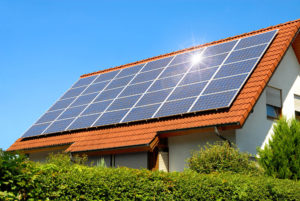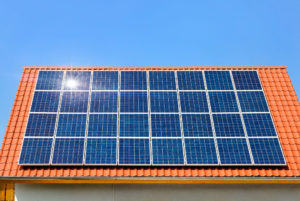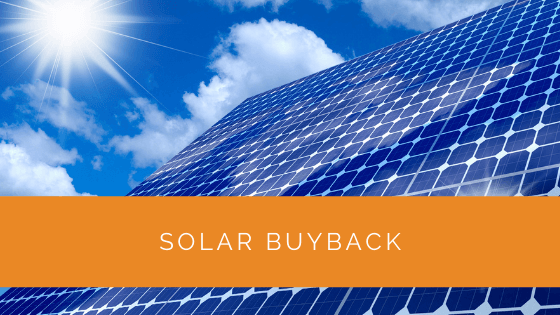In today’s world, where environmental sustainability and energy efficiency have become of utmost importance, harnessing the power of the sun through solar panels is no longer just a trend, but a necessity. It’s no wonder that more and more homeowners in the UK are opting for solar panels to power their homes. One of the most popular ways to get the most out of solar energy was through the Feed-In Tariff Scheme (FIT). But with the scheme now closed to new applicants, homeowners are on the lookout for alternative options that will allow them to save money on their energy bills and make a positive impact on the environment.
That’s where the concept of “Solar Buyback” comes in. By selling the excess energy generated by their solar panels back to energy suppliers, homeowners can both reduce their energy bills and contribute to a greener planet. But is Solar Buyback truly worth the investment? In this article, we’ll explore the ins and outs of Solar Buyback and provide valuable insights to help you make informed decisions about your solar energy journey. We’ll delve into the intricacies of this option, comparing its advantages and disadvantages, and explore the key factors to consider before placing your trust in these companies. Join us on this solar-powered adventure as we navigate the UK’s dynamic landscape of solar energy.
Contents
- 1 Key Takeaways
- 2 What is the Feed-In Tariff Scheme?
- 3 Why Pay When There Are ‘Free’ Solar Panels?
- 4 What is a Solar Buyback?
- 5 Which Scheme is the Best One?
- 6 What to Consider Before Trusting These Companies?
- 7 Case Study: Evaluating Solar Buyback for Long-Term Financial Benefits
- 8 Expert Insights From Our Solar Panel Installers About Solar Buyback
- 9 Discover the Power of Solar with Solar Panels Network
- 10 Bottom Line
Key Takeaways
- The UK’s Feed-In Tariff (FIT) scheme allowed homeowners with solar panels to get paid for the electricity they generate, including both a generation tariff and an export tariff.
- While the FIT scheme has advantages, such as promoting renewable energy, it also has downsides, including diminishing returns over time as tariff rates decrease.
- “Free” solar panel schemes and buyback options offer alternative ways to benefit from solar energy. Still, they may not provide as much long-term profit as the FIT scheme, and consumers should carefully consider the terms and conditions of such arrangements.
What is the Feed-In Tariff Scheme?
Under this programme, you can apply to your energy supplier to get paid for the electricity generated by pre-installed solar panels.
The Feed-In Tariff (FIT) usually contains two payment elements.
- The generation tariff is the amount you get paid for every unit of electricity generated.
- The export tariff applies when you get paid for every surplus unit you sell back to the energy supplier.
Is It Worth Investing in a FIT Scheme?
The Feed-In Tariff depends on the rates you sign up for, the electricity generated and subsequently used, etc. Unfortunately, like all schemes, this too has its downsides.
For one, the money saved on electricity is spent paying for installation and maintenance for the contractual number of years. Most of the time, consumers don’t receive export tariffs because there are no surplus units.
With time, the FIT was also gradually reduced. FIT started at 43.3p per unit of electricity in 2010, but by 2012, it dropped to 25p per unit. That means people who applied to the scheme when the FIT was at its lowest hardly gained any profit.
This scheme came to a close in March 2019 for new applicants. Consumers already receiving FIT payments would still receive payments until the end of their contract period. The scheme closure was partly due to the government’s shift towards other forms of renewable energy incentives.
Note: How much electricity per annum does a PV system generate?
kWp stands for kilowatt-peak, which is the output of power per hour.
kWh refers to the amount of electricity used.
Usually, in an average household, a 4kWp PV system (16 panels) generates 9.4kWh per day. That means a total of 3,431kWh is generated per year.

Why Pay When There Are ‘Free’ Solar Panels?
Here, you let rent-a-roof companies lease your roof and install solar panels. In turn, you could use the electricity generated from it for free. Such contracts are usually 20-25 years long.
One of the advantages of this scheme was that you didn’t have to pay for the installation or maintenance upfront.
The company also claims any generation and export tariffs the consumer might have received. That means missing out on as much as £23,000 if the investment occurred when the tariff was 55p per unit.
What is a Solar Buyback?
A buyback is when a company offers you a huge amount of money upfront for the remainder of your Feed-In Tariff. However, you still get to use the electricity generated freely.
Companies promise you could earn up to £20,000 by ‘selling your Feed-In Tariff’.
The actual amount depends on the remaining years of the FIT contract and the system’s generation capacity. This buyback option has become more relevant with the introduction of the Smart Export Guarantee (SEG), which replaced the FIT scheme.
How is Solar Buyback Different from ‘Free’ Solar Panels?
A solar buyback, or a solar equity release, is similar to rent-a-roof companies striving to take advantage of consumers through their Feed-In Tariffs.
However, they immediately pay you the remaining years’ worth of tariff. While this might seem like a lot in a short time, these schemes depend on the number of years left in your contract, the size of your PV systems, and how much electricity they generate.
For example, you might be offered £5,000 as 20 years’ worth of payment. But you would have earned close to £14,000 over 20 years with the Feed-In Tariff.
Under the Smart Export Guarantee (SEG), introduced in January 2020, solar panel owners can sell excess electricity to suppliers at competitive rates. The SEG offers a more market-driven approach compared to the fixed FIT rates, providing an alternative for those considering Solar Buyback.
Which Scheme is the Best One?
If you had invested in the FIT scheme before April 2011, when the tariff was highest, it generated a good profit. However, that also depends mainly on the electricity used in a household and the amount generated.
However, the rent-a-roof and buyback companies don’t offer much in the way of profits.
The buyback companies’ only advantage is offering the payment outright, even though it does not come close to meeting the total tariff of the FIT scheme.
With the SEG now in place, it’s crucial to compare the potential earnings from SEG payments against the lump sum offered by buyback companies to make an informed decision.

What to Consider Before Trusting These Companies?
- Legal ownership of the system
- Additional costs in installation and maintenance
- Process for removal after the contract is terminated
- Arrangements for maintaining the system
- Arrangements for terminating the agreement
- Insurance of the system
- If the net cost is to be received upfront in case of immediate purchase
- Guarantee of the companies and installers
- Whether the consumer can make changes to the system after purchase
- The implications for property value and the terms related to early termination or system ownership transfer.
Some trustworthy suppliers (and what they pay per unit):
- British Gas (3.2p)
- EDF Energy (3p)
- ON Energy (3p)
- Tesla (12p)
- Shell Energy (3.5p)
Rates provided may fluctuate, and it’s advisable to check with the suppliers directly for current SEG rates.
Case Study: Evaluating Solar Buyback for Long-Term Financial Benefits
Background
At Solar Panels Network, we frequently assist homeowners exploring the financial benefits of various solar energy schemes. One of our recent cases involved a client with a 4kWp solar panel system who was considering a Solar Buyback option. The client, who was originally benefiting from the Feed-In Tariff (FIT) scheme, wanted to understand if a buyback would offer a better financial outcome than continuing with the FIT payments or transitioning to the Smart Export Guarantee (SEG).
Project Overview
Our primary objective was to provide a thorough analysis of the Solar Buyback offer, comparing it with the potential earnings from the FIT and SEG schemes. The client sought clarity on which option would maximise their financial benefits over the long term.
Implementation
- Comprehensive Consultation: We reviewed the client’s current energy generation, usage, and financial goals. This included analysing the remaining years of the FIT contract and the expected performance of the solar panels.
- Market Research: We researched the offers from various Solar Buyback companies, focusing on the upfront payments and contractual obligations. We also compared the SEG rates offered by different energy suppliers.
- Financial Analysis: Our team developed a detailed financial model to forecast the potential earnings from continuing with FIT or SEG versus accepting a buyback offer. This model accounted for variables such as energy prices, solar panel degradation, and maintenance costs.
Results
- Comparative Financial Benefits: The analysis showed that while the Solar Buyback offered a substantial immediate payment, the long-term earnings from continuing with FIT or transitioning to SEG were significantly higher.
- Informed Decision-Making: Armed with detailed financial projections, the client chose to continue with their FIT payments, recognising the cumulative value over the contract period. They also planned to explore SEG as a future option, ensuring flexibility and potential market-driven benefits.
- Enhanced Client Understanding: The client gained a deeper understanding of the solar energy market dynamics and the factors influencing their decision, including legal and contractual implications.
Summary
This case study illustrates the importance of a thorough evaluation when considering Solar Buyback schemes. At Solar Panels Network, we provided comprehensive guidance, enabling the client to make an informed choice that aligned with their long-term financial objectives. By offering detailed analysis and understanding of the evolving energy market, we ensured the client could maximise their solar investment. This approach underscores the critical role of informed decision-making in navigating the complexities of renewable energy options in the UK.
Expert Insights From Our Solar Panel Installers About Solar Buyback
Choosing a Solar Buyback scheme can be an effective way to monetise the energy you produce, especially if you’re looking for immediate financial returns. However, it’s crucial to understand the long-term financial impact and compare it with the potential earnings from the Smart Export Guarantee. Each option has its benefits, depending on your specific situation.
Lead Solar Energy Consultant
Solar Buyback offers an attractive upfront payment, but homeowners should consider the total value over the contract’s lifetime. With the SEG now available, you might find more value in retaining your FIT payments or opting for SEG tariffs. It’s about balancing immediate needs with long-term gains.
Senior Renewable Energy Advisor
When considering a Solar Buyback, ensure that the terms are clear and favourable. The key is to assess whether the lump sum offered matches the expected earnings from your current setup. It’s also essential to consider the implications for property value and future system upgrades.
Installation and Maintenance Manager
Discover the Power of Solar with Solar Panels Network
Are you navigating the world of solar installations? Look no further than Solar Panels Network, the UK’s trusted partner in harnessing the sun’s potential. Our dedication goes beyond just installations; we’re on a mission to transform how homeowners and businesses across the UK perceive and utilise energy. By choosing us, you’re reducing your carbon footprint and making a smart financial move that promises savings for years ahead. Contact us today and embark on your solar journey.
Bottom Line
The Feed-In Tariff Scheme (FIT), once a beacon of hope for those looking to generate green energy and earn some extra income, has undergone significant changes over the years. While early adopters of the FIT scheme reaped rewards, the gradual reduction in tariff rates and the closure of the program to new applicants have raised questions about its long-term viability.
In this evolving landscape, “Solar Buyback” has emerged as an intriguing alternative, offering upfront payments in exchange for the remaining years of your FIT scheme. However, it’s essential to approach such schemes with caution, considering factors like legal ownership, installation costs, maintenance, and contractual obligations.
Ultimately, the decision between FIT, “Free” Solar Panels, or Solar Buyback hinges on individual circumstances and priorities. What remains undeniable is the collective impact of these initiatives in reducing our carbon footprint and promoting a sustainable future. Whether it’s for personal financial gain or the greater good of the planet, the journey to harnessing solar power continues to be an exciting and evolving one, with homeowners and businesses at the forefront of this renewable energy revolution.
About the Author
Solar Panels Network stands at the forefront of solar energy solutions, driven by a team of seasoned solar engineers and energy consultants. With over decades of experience in delivering high-quality solar installations and maintenance, we are committed to promoting sustainable energy through customer-centric, tailored solutions. Our articles reflect this commitment, crafted collaboratively by experts to provide accurate, up-to-date insights into solar technology, ensuring our readers are well-informed and empowered in their solar energy decisions.

